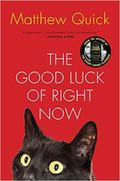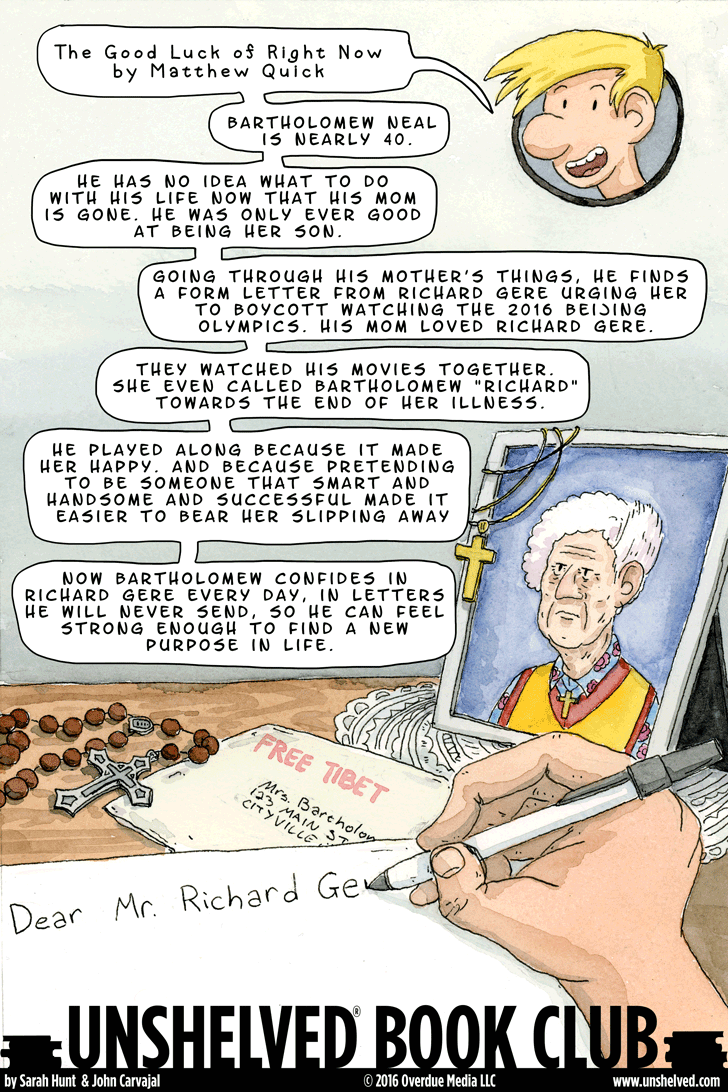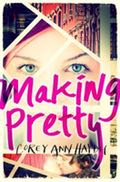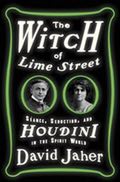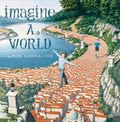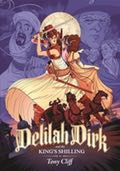Link to this review in the form of a comic strip by sarahhunt tagged literary
Link to this review by diane tagged coming of age
Arizona and Montana are sisters living with their dad, a plastic surgeon with the tendency to marry and “fix” wives who then leave him. (Three stepmothers in ten years!) With Arizona away at college, Montana (17) has found a new friend in Karissa (23) and a hot new boyfriend, Bernardo. When Arizona comes home for the summer, though, things go bad quickly — she has a newly enhanced figure, and she does not like Karissa at all.
Why I picked it up: I was looking for something that would appeal to students who love teen romance, but wanted to avoid sappy, sickeningly sweet love stories.
Why I finished it: Montana was clearly a young woman looking for an anchor in her life. When her mom left, that was Arizona. When Arizona left for college, Montana was adrift. Her friendship with Karissa seemed to fill that need, but I could tell there was something just a little off about the stories Karissa told. When Montana’s Dad announced that he was ready to marry again and was proposing to Karissa, I was hooked!
Montana’s jealousy over losing a friend, her anger with her Dad, her budding romance, and her changing relationship with her sister all made for an emotional roller coaster. Although the mom in me didn’t always approve of Montana’s choices, the ending left me feeling satisfied — instead of a “happily ever after” there were reasonable resolutions that felt rational and real.
It’s perfect for: My niece, Kris, who loves slightly edgy teen romances with believable characters. Her favorites are books that tackle real life issues, like sibling rivalry and best friend conflicts. Since she’s been through all of Sarah Dessen’s and Jenny Han’s books, she’s looking for a new author to discover. I think she’ll really like this one.
Link to this review by flemtastic tagged history
Eminent British scientist Sir Oliver Lodge and esteemed author Sir Arthur Conan Doyle were both believers in Spiritualism, the ability to speak to the dead through a medium. Each traveled to the United States to lecture on the topic, and America was ready to hear their message. Scientific American investigated and brought top mediums to display their abilities in scientific, carefully observed settings. In 1922, the magazine offered $2500 to the first person to show documented proof of supernatural abilities or communication with the dead. A committee of five men that included Harry Houdini judged whether or not the phenomena were real. After several popular mediums failed to manifest the promised results, the most credible of them, a high-society medium named Margery Crandon, caused the committee to split over whether she had won the contest. Houdini became her harshest critic and stridently insisted, not only in séances but also in newspapers, that she was a fraud.
Why I picked it up: I have always been interested in Harry Houdini and his career as an escape artist, and this book promised to show me a new side of him as an anti-spiritualism crusader. (While he wanted to believe that he could contact his dead mother (with whom he had been very close), he also didn’t want to be flimflammed.)
Why I finished it: Both Britain and America experienced a popular surge of belief in Spiritualism after the Great War. Citizens desperately wanted to know that death was not the end, and many parents/loved ones used the services of mediums to try to contact those killed in the war. One such medium was a woman who claimed to be able to generate ectoplasm (a streamer of visible otherworldly energy) from her vagina while conducting a séance. Turns out she was storing crepe paper ribbons in her lady parts and producing them during the session. Another woman, who claimed to be able to manifest flesh from the spirit world, was caught hiding human remains in the same place. When everyone thought she was still sitting in her chair in the dark, she would rub the cold flesh on participants shoulders and hands. (Once precautions were taken to keep the medium in her chair, the manifestations vanished.) Houdini and his fellow committee members used different strategies to catch her and others, including building a cage so that mediums couldn’t stand up or move during séances.
It’s perfect for: My friend Ken, who had me watch James Randi’s TED talk. Randi has made it his life’s work to expose quackery both in paranormal claims and in folk medicine. He has a standing, two-decade old, one million dollar offer for anyone who can prove supernatural abilities under scientific conditions. Houdini would be proud of the Great Randini!
Link to this review by sarahhunt tagged art • cookbook • coffee table book
Food stylist and photographer Kuwahara takes pictures of her meals and snacks, which always include bread. Her dog can always be seen under the table, gazing up longingly. Captions describe each meal and the sassy thoughts of the dog under it. Recipes are at the end of the book.
Why I picked it up: I spotted the book on display in a bookstore, and the meal on the cover caught my eye.
Why I finished it: Each meal looks perfect and delicious. I’ve heard that Japan should be just as famous for its high-quality European-style and Asian influenced baked goods as for noodles and seafood. After seeing photos of rustic walnut bread, a chestnut bagel, and light-as-cake white bread, I’m a believer. The book inspired me to put some of Kuwahara’s easy variety and elegance into my own meals — so far I’ve made her simple green salad with quartered fresh figs and prosciutto.
It’s perfect for: Bibi. She’s an artist who will enjoy the sleek simplicity of each meal and place setting, especially when her own life feels cluttered.
Link to this review by wally tagged picture book • poetry
Artist Rob Gonsalves asks readers to imagine worlds that challenge their perceptions by pairing short poems with dreamlike paintings. On one page, he suggests that each word in a book is the start of a bigger idea; the painting shows people studying among stacks of books that become towers of a city. In another, a tree trunk vanishes into distance as its branches become rivers and streams. The poem invites the reader to “climb up to a valley / paddle along a branch, / and feel the cool shade of a forest / from a single tree.”
Why I picked it up: I had encountered his previous books, Imagine a Night, Imagine a Day, and Imagine a Place, and this looked like a good companion volume.
Why I finished it: His artwork is reminiscent of M.C. Escher’s Sky and Water woodcuts in which drawings of birds on one half of a page seem to transform and become fish on the other half. Gonsalves’s paintings always depict people in natural settings. A poem that invokes “rushing water / steps and spins to life / in the rhythm of nature’s dance” is paired with a painting of white water flowing over rocks that becomes, at its base, a group of dancers.
It’s perfect for: Rose, who is trying to raise her children to be optimists, and who would appreciate the positive feel of each brief poem. She would enjoy sharing this book with her young son, Aidan. He likes boats, and will particularly love the picture in which fir trees seem to become the masts of sailing ships paired with a poem that imagines “the scent of an adventure / that awakens the woods / and lets stones set sail.”
Link to this review by geneambaum tagged historical fiction • graphic novel
After rescuing a young boy on behalf of his father, swashbuckling adventurers Delilah Dirk and Selim head to Portugal to check out some Moorish ruins. England and France are fighting one another across their path, and Delilah is taken into custody by a group of British redcoats led by Major Merrick, who takes a personal dislike to her. Accused of espionage, Delilah faces imprisonment and execution. Selim manages to set her free, but she decides to return to England, confront Merrick, and save her reputation. To do all that, she’ll also have to rejoin her proper, upper-class family who have no idea what she’s been up to in Europe.
Why I picked it up: I loved the first book, and Tony Cliff is one of the nicest comics pros I’ve ever met.
Why I finished it: I’m sure I’ve said this before, but Delilah Dirk’s fights are amazing ballets in which she exhibits her skills, quickness, and bravery. (She reminds me of Errol Flynn’s Robin Hood.) She’s also funny. One of my favorite moments is when Merrick first confronts Delilah and Selim in Spain. He finds their swords suspicious, and can’t believe anyone would need help from a woman and a Turk. Merrick asks how they avoid French patrols. Delilah offers him the short version: “We go around.” Merrick, unsatisfied with that, asks for the long version. Delilah: “Weee gooooo arrooouuunnnnnnnd.” Merrick isn’t quite as amused as I was. (And then there’s one of those great fights I was talking about, this one between Delilah and the Redcoats. She clearly gets the better of Merrick and his men.)
Readalikes: Shannon and Dean Hale have written about a few heroic heroines as well, including The Princess in Black illustrated by LeUyen Pham and Rapunzel’s Revenge illustrated by Dean Hale. And even though it’s in French, check out this collection of Pierre Allery and Ange’s Belladone, a story about a female secret agent in late 1600s Paris which is worth reading for the elegant sword fights alone.
